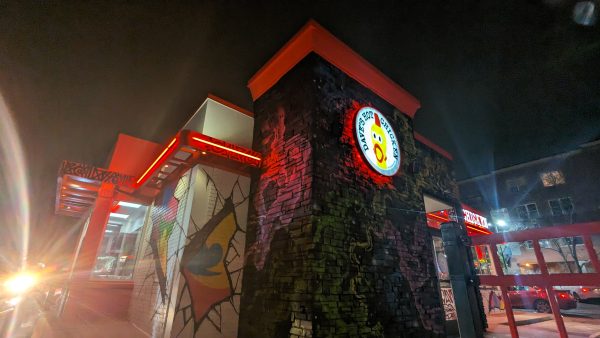Is athletics a microcosm of campus diversity
How is the diversity at Hamline reflected in its sports programs?
October 30, 2018
Hamline claims to have a diverse student body, and that seems to be true when you look at all of the initiatives, student organizations and programs that we have here on campus. A lot of things that go on here are centered around diversity — mainly racial diversity — and a lot of the conversations that we have inside the classroom are oriented to be more accessible to a diverse set of students. We talk about issues surrounding the differences between us all, and we try our hardest, not to overcome the differences, but to unlearn the issues that we see in them. A great place to look to see the effects of this effort is in our sports teams.
Senior Gabrielle Brown of the track team, junior Rachel Kissinger and sophomore Alyssa Bryan-Jeffries, both of the basketball team, all agree that there are visible steps being taken in pursuit of being more culturally sensitive and aware on our sports teams. When asked about the diversity levels on campus being reflected on the sports teams, Brown stated that despite the track team being the most diverse of all of the sports teams, it’s still “not as prominent as I’d like it to be,” especially given our location and the effort that Hamline likes to claim that they have with recruitment and such.Bryan-Jeffries, however, believes that the level of diversity on the basketball team “perfectly reflect how diverse Hamline really is.” Overall, the sports teams are as diverse as Hamline is, but there still isn’t any ideal level of diversity, on campus or in sports.
That isn’t something that causes problems, though. With the efforts that Hamline takes to become more diverse with their student body, their staff and their faculty, there are clear steps that have been taken and clear progress that has been made. Brown described something that she called a “call out culture,” where athletes will call each other out or call out the coaches on microaggressions that they make when they’re all talking or joking with each other. “Honestly, it’s a beautiful thing,” Brown said, with the confrontation of offensive jokes and comments being something that happens without it being a big deal. Bryan-Jeffries mentioned that last year on the basketball team, they “had to talk about saying the n-word,” and Kissinger agreed that the discussion itself wasn’t particularly difficult, and that it felt like a learning moment for everyone involved. The coaches on all of the teams are seen to be trying their hardest to be more inclusive and culturally sensitive, and the teams themselves are becoming more aware of the issues that there are in between their words.
Bryan-Jeffries mentioned, as did Brown, that this year is one of the most diverse years for their respective teams, as well as for Hamline as a whole. In prior years, there has been a lot of talk about diversity without the statistics to match it, but this year is different. The freshman class this year is one of the most diverse classes we’ve had, and that’s reflected in the sports teams and their levels of diversity. Beyond racial diversity, there’s also a wider range of socioeconomic backgrounds, political stances and nationalities — with so many more backgrounds represented on campus this year, the conversations about diversity are even easier to have. Before, it was felt to be difficult because we didn’t have enough of the right voices, and the voices that we did have didn’t have applicability. Now, there are more of the right voices, and the people who are in the learning position are truly open to change. As Kissinger said, the coaches and the teams are “all pretty inclusive,” meaning that everyone is open to learning about everyone, and that they are a team not only in the athletic sense.





